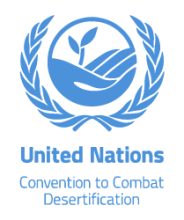Resource information
Across sub-Saharan Africa agriculture is the backbone of the economy, accounting for 30-40% of nations’ gross domestic product, and a leading source of jobs for over two-thirds of the population. Improving the
productivity, profitability and sustainability of agriculture on the millions of farms that cover the African continent is essential for ending poverty and boosting shared prosperity in the region.
Even though women make up a large share of Africa’s farmers, they are, for the most part, locked out of land ownership, access to credit and productive farm inputs, support from extension services and access to markets, to name just a few factors essential to their productivity. This array of daunting challenges means that, on average, Africa’s female farmers produce less per hectare compared with men, which adversely affects their families, communities and – in the long term – entire countries.
Despite the centrality of agriculture in the economies of most African nations, relatively little is known about why farms managed by women are on average less productive. This “knowledge gap” in turn translates into a “policy gap” in the steps that African governments, their development partners, business leaders and civil
society can take to equalise opportunities for female and male farmers.



